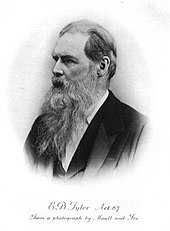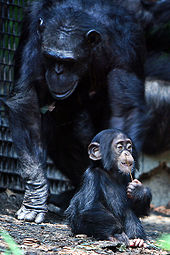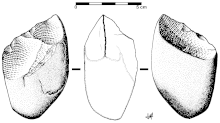Culture
Culture (Latin: cultura, lit. “cultivation”)[1] is a modern concept based on a term first used in classical antiquity by the Roman orator, Cicero: “cultura animi”. The term “culture” appeared first in its current sense in Europe in the 18th and 19th centuries, to connote a process of cultivation or improvement, as in agriculture or horticulture. In the 19th century, the term developed to refer first to the betterment or refinement of the individual, especially through education, and then to the fulfillment of national aspirations or ideals. In the mid-19th century, some scientists used the term “culture” to refer to a universal human capacity. For the German nonpositivist sociologist Georg Simmel, culture referred to “the cultivation of individuals through the agency of external forms which have been objectified in the course of history”.[2]
In the 20th century, “culture” emerged as a central concept in anthropology, encompassing the range of human phenomena that cannot be attributed to genetic inheritance. Specifically, the term “culture” in American anthropology had two meanings: (1) the evolved human capacity to classify and represent experiences with symbols, and to act imaginatively and creatively; and (2) the distinct ways that people living in different parts of the world classified and represented their experiences, and acted creatively.[citation needed]
Distinctions are currently made between the physical artifacts created by a society, its so-called material culture and everything else,[3] the intangibles such as language, customs, etc. that are the main referent of the term “culture”.
German Romanticism

Johann Herder called attention to national cultures.
The German philosopher Immanuel Kant (1724–1804) formulated an individualist definition of “enlightenment” similar to the concept of bildung: “Enlightenment is man’s emergence from his self-incurred immaturity.”[5] He argued that this immaturity comes not from a lack of understanding, but from a lack of courage to think independently. Against this intellectual cowardice, Kant urged: Sapere aude, “Dare to be wise!” In reaction to Kant, German scholars such as Johann Gottfried Herder(1744–1803) argued that human creativity, which necessarily takes unpredictable and highly diverse forms, is as important as human rationality. Moreover, Herder proposed a collective form of bildung: “For Herder, Bildung was the totality of experiences that provide a coherent identity, and sense of common destiny, to a people.”[6]

Adolf Bastiandeveloped a universal model of culture.
In 1795, the great linguist and philosopher Wilhelm von Humboldt (1767–1835) called for an anthropology that would synthesize Kant’s and Herder’s interests. During the Romantic era, scholars in Germany, especially those concerned with nationalist movements—such as the nationalist struggle to create a “Germany” out of diverse principalities, and the nationalist struggles by ethnic minorities against the Austro-Hungarian Empire—developed a more inclusive notion of culture as “worldview.” According to this school of thought, each ethnic group has a distinct worldview that is incommensurable with the worldviews of other groups. Although more inclusive than earlier views, this approach to culture still allowed for distinctions between “civilized” and “primitive” or “tribal” cultures.
In 1860, Adolf Bastian (1826–1905) argued for “the psychic unity of mankind”. He proposed that a scientific comparison of all human societies would reveal that distinct worldviews consisted of the same basic elements. According to Bastian, all human societies share a set of “elementary ideas” (Elementargedanken); different cultures, or different “folk ideas” (Völkergedanken), are local modifications of the elementary ideas.[7] This view paved the way for the modern understanding of culture. Franz Boas (1858–1942) was trained in this tradition, and he brought it with him when he left Germany for the United States.
[edit]English Romanticism

British poet and critic Matthew Arnold viewed “culture” as the cultivation of the humanist ideal.
In the 19th century, humanists such as English poet and essayist Matthew Arnold (1822–1888) used the word “culture” to refer to an ideal of individual human refinement, of “the best that has been thought and said in the world.”[8] This concept of culture is comparable to the German concept of bildung: “…culture being a pursuit of our total perfection by means of getting to know, on all the matters which most concern us, the best which has been thought and said in the world.”[8]
In practice, culture referred to an élite ideal and was associated with such activities as art, classical music, and haute cuisine.[9] As these forms were associated with urban life, “culture” was identified with “civilization” (from lat. civitas, city). Another facet of the Romantic movement was an interest in folklore, which led to identifying a “culture” among non-elites. This distinction is often characterized as that between high culture, namely that of the ruling social group, and low culture. In other words, the idea of “culture” that developed in Europe during the 18th and early 19th centuries reflected inequalities within European societies.[10]

British anthropologist Edward Tylor was one of the first English-speaking scholars to use the term culture in an inclusive and universal sense.
Matthew Arnold contrasted “culture” with anarchy; other Europeans, following philosophers Thomas Hobbes and Jean-Jacques Rousseau, contrasted “culture” with “the state of nature”. According to Hobbes and Rousseau, the Native Americans who were being conquered by Europeans from the 16th centuries on were living in a state of nature; this opposition was expressed through the contrast between “civilized” and “uncivilized.” According to this way of thinking, one could classify some countries and nations as more civilized than others and some people as more cultured than others. This contrast led to Herbert Spencer‘s theory of Social Darwinism and Lewis Henry Morgan‘s theory of cultural evolution. Just as some critics have argued that the distinction between high and low cultures is really an expression of the conflict between European elites and non-elites, some critics have argued that the distinction between civilized and uncivilized people is really an expression of the conflict between European colonial powers and their colonial subjects.
Other 19th century critics, following Rousseau, have accepted this differentiation between higher and lower culture, but have seen the refinement andsophistication of high culture as corrupting and unnatural developments that obscure and distort people’s essential nature. These critics considered folk music(as produced by “the folk”, i.e., rural, illiterate, peasants) to honestly express a natural way of life, while classical music seemed superficial and decadent. Equally, this view often portrayed indigenous peoples as “noble savages” living authentic and unblemished lives, uncomplicated and uncorrupted by the highly stratified capitalist systems of the West.
In 1870 Edward Tylor (1832–1917) applied these ideas of higher versus lower culture to propose a theory of the evolution of religion. According to this theory, religion evolves from more polytheistic to more monotheistic forms.[11] In the process, he redefined culture as a diverse set of activities characteristic of all human societies. This view paved the way for the modern understanding of culture.
[edit]20th century discourses
[edit]Anthropology
[edit]American anthropology

Petroglyphs in modern-day Gobustan,Azerbaijan, dating back to 10 000 BCE and indicating a thriving culture
Although anthropologists worldwide refer to Tylor’s definition of culture, in the 20th century “culture” emerged as the central and unifying concept of American anthropology, where it most commonly refers to the universal human capacity to classify and encode human experiences symbolically, and to communicate symbolically encoded experiences socially.[citation needed] American anthropology is organized into four fields, each of which plays an important role in research on culture:
Research in these fields has influenced anthropologists working in other countries to different degrees.[citation needed]
[edit]Biological anthropology: the evolution of culture
Discussion concerning culture among biological anthropologists centers around two debates. First, is culture uniquely human or shared by other species (most notably, other primates)? This is an important question, as the theory of evolution holds that humans are descended from (now extinct) non-human primates. Second, how did culture evolve among human beings?
Gerald Weiss noted that although Tylor’s classic definition of culture was restricted to humans, many anthropologists take this for granted and thus elide that important qualification from later definitions, merely equating culture with any learned behavior. This slippage is a problem because during the formative years of modern primatology, some primatologists were trained in anthropology (and understood that culture refers to learned behavior among humans), and others were not. Notable non-anthropologists, like Robert Yerkes and Jane Goodall thus argued that since chimpanzees have learned behaviors, they have culture.[12][13] Today, anthropological primatologists are divided, several arguing that non-human primates have culture, others arguing that they do not.[14][15][16][17]
This scientific debate is complicated by ethical concerns. The subjects of primatology are non-human primates, and whatever culture these primates have is threatened by human activity. After reviewing the research on primate culture, W.C. McGrew concluded, “[a] discipline requires subjects, and most species of nonhuman primates are endangered by their human cousins. Ultimately, whatever its merit, cultural primatology must be committed to cultural survival [i.e. to the survival of primate cultures].”[18]
McGrew suggests a definition of culture that he finds scientifically useful for studying primate culture. He points out that scientists do not have access to the subjective thoughts or knowledge of non-human primates. Thus, if culture is defined in terms of knowledge, then scientists are severely limited in their attempts to study primate culture. Instead of defining culture as a kind of knowledge, McGrew suggests that we view culture as a process. He lists six steps in the process:[18]
- A new pattern of behavior is invented, or an existing one is modified.
- The innovator transmits this pattern to another.
- The form of the pattern is consistent within and across performers, perhaps even in terms of recognizable stylistic features.
- The one who acquires the pattern retains the ability to perform it long after having acquired it.
- The pattern spreads across social units in a population. These social units may be families, clans, troops, or bands.
- The pattern endures across generations.
McGrew admits that all six criteria may be strict, given the difficulties in observing primate behavior in the wild. But he also insists on the need to be as inclusive as possible, on the need for a definition of culture that “casts the net widely”:
Culture is considered to be group-specific behavior that is acquired, at least in part, from social influences. Here, group is considered to be the species-typical unit, whether it be a troop, lineage, subgroup, or so on. Prima facie evidence of culture comes from within-species but across-group variation in behavior, as when a pattern is persistent in one community of chimpanzees but is absent from another, or when different communities perform different versions of the same pattern. The suggestion of culture in action is stronger when the difference across the groups cannot be explained solely by ecological factors ….[19]
As Charles Frederick Voegelin pointed out, if “culture” is reduced to “learned behavior,” then all animals have culture.[20] Certainly all specialists agree that all primate species evidence common cognitive skills: knowledge of object-permanence, cognitive mapping, the ability to categorize objects, and creative problem solving.[21] Moreover, all primate species show evidence of shared social skills: they recognize members of their social group; they form direct relationships based on degrees of kinship and rank; they recognize third-party social relationships; they predict future behavior; and they cooperate in problem-solving.[21]

Cast of the skeleton of Lucy, an Australopithecus afarensis

One current view of the temporal and geographical distribution of hominidpopulations
Nevertheless, the term “culture” applies to non-human animals only if we define culture as any or all learned behavior. Within mainstream physical anthropology, scholars tend to think that a more restrictive definition is necessary. These researchers are concerned with how human beings evolved to be different from other species. A more precise definition of culture, which excludes non-human social behavior, would allow physical anthropologists to study how humans evolved their unique capacity for “culture”.
Chimpanzees (Pan troglodytes and Pan paniscus) are humans’ (Homo sapiens) closest living relative; both are descended from a common ancestor which lived around five or six million years ago. This is the same amount of time it took for horses and zebras, lions and tigers to diverge from their respective common ancestors.[22] The evolution of modern humans is rapid: Australopithicenes evolved four million years ago and modern humans in past several hundred thousand years.[23] During this time humanity evolved three distinctive features:
- (a) the creation and use of conventional symbols, including linguistic symbols and their derivatives, such as written language and mathematical symbols and notations; (b) the creation and use of complex tools and other instrumental technologies; and (c) the creation and participation in complex social organization and institutions.[24]
According to developmental psychologist Michael Tomasello, “where these complex and species-unique behavioral practices, and the cognitive skills that underlie them, came from” is a fundamental anthropological question. Given that contemporary humans and chimpanzees are far more different than horses and zebras, or rats and mice, and that the evolution of this great difference occurred in such a short period of time, “our search must be for some small difference that made a big difference – some adaptation, or small set of adaptations, that changed the process of primate cognitive evolution in fundamental ways.” According to Tomasello, the answer to this question must form the basis of a scientific definition of “human culture.”[24]
In a recent review of the major research on human and primate tool-use, communication, and learning strategies, Tomasello argues that the key human advances over primates (language, complex technologies, and complex social organization) are all the results of humans pooling cognitive resources. This is called “the ratchet effect:” innovations spread and are shared by a group, and mastered “by youngsters, which enables them to remain in their new and improved form within the group until something better comes along.” The key point is that children are born good at a particular kind of social learning; this creates a favored environment for social innovations, making them more likely to be maintained and transmitted to new generations than individual innovations.[25] For Tomasello, human social learning—the kind of learning that distinguishes humans from other primates and that played a decisive role in human evolution—is based on two elements: first, what he calls “imitative learning,” (as opposed to “emulative learning” characteristic of other primates) and second, the fact that humans represent their experiences symbolically (rather than iconically, as is characteristic of other primates). Together, these elements enable humans to be both inventive, and to preserve useful inventions. It is this combination that produces the ratchet effect.

Chimpanzee mother and baby

Chimpanzee extracting insects

The Japanese Macaques at Jigokudanihotspring in Nagano
The kind of learning found among other primates is “emulation learning,” which “focuses on the environmental events involved – results or changes of state in the environment that the other produced – rather than on the actions that produced those results.”[26][27][28] Tomasello emphasizes that emulation learning is a highly adaptive strategy for apes because it focuses on the effects of an act. In laboratory experiments, chimpanzees were shown two different ways for using a rake-like tool to obtain an out-of-reach-object. Both methods were effective, but one was more efficient than the other. Chimpanzees consistently emulated the more efficient method.[29]
Examples of emulation learning are well documented among primates. Notable examples include Japanese macaquepotato washing, Chimpanzee tool use, and Chimpanzee gestural communication. In 1953, an 18-month-old female macaque monkey was observed taking sandy pieces of sweet potato (given to the monkeys by observers) to a stream (and later, to the ocean) to wash off the sand. After three months, the same behavior was observed in her mother and two playmates, and then the playmates’ mothers. Over the next two years seven other young macaques were observed washing their potatoes, and by the end of the third year 40% of the troop had adopted the practice.[30][31]Although this story is popularly represented as a straightforward example of human-like learning, evidence suggests that it is not. Many monkeys naturally brush sand off of food; this behavior had been observed in the macaque troop prior to the first observed washing. Moreover, potato washing was observed in four other separate macaque troops, suggesting that at least four other individual monkeys had learned to wash off sand on their own.[31] Other monkey species in captivity quickly learn to wash off their food.[32] Finally, the spread of learning among the Japanese macaques was fairly slow, and the rate at which new members of the troop learned did not keep pace with the growth of the troop. If the form of learning were imitation, the rate of learning should have been exponential. It is more likely that the monkeys’ washing behavior is based on the common behavior of cleaning off food, and that monkeys that spent time by the water independently learned to wash, rather than wipe their food. This explains both why those monkeys that kept company with the original washer, and who thus spent a good deal of time by the water, also figured out how to wash their potatoes. It also explains why the rate at which this behavior spread was slow.[33]
Chimpanzees exhibit a variety of population-specific tool use: termite-fishing, ant-fishing, ant-dipping, nut-cracking, and leaf-sponging. Gombe Chimpanzees fish for termites using small, thin sticks, but chimpanzees in Western Africa use large sticks to break holes in mounds and use their hands to scoop up termites. Some of this variation may be the result of “environmental shaping” (there is more rainfall in western Africa, softening termite mounds and making them easier to break apart, than in the Gombe reserve in eastern Africa. Nevertheless it is clear that chimpanzees are good at emulation learning. Chimpanzee children independently know how to roll over logs, and know how to eat insects. When children see their mothers rolling over logs to eat the insects beneath, they quickly learn to do the same. In other words, this form of learning builds on activities the children already know.[27][34]

Inuit family

Children in Jerusalem
The kind of learning characteristic of human children is “imitative learning,” which “means reproducing an instrumental act understood intentionally.”[25] Human infants begin to display some evidence of this form of learning between the ages of nine and 12 months, when infants fix their attention not only on an object, but on the gaze of an adult which enables them to use adults as points of reference and thus “act on objects in the way adults are acting on them.”[35] This dynamic is well documented and has also been termed “joint engagement” or “joint attention.”[36][37] Essential to this dynamic is the infant’s growing capacity to recognize others as “intentional agents:” people “with the power to control their spontaneous behavior” and who “have goals and make active choices among behavioral means for attaining those goals.”[38]
The development of skills in joint attention by the end of a human child’s first year of life provides the basis for the development of imitative learning in the second year. In one study 14-month old children imitated an adult’s over-complex method of turning on a light, even when they could have used an easier and more natural motion to the same effect.[39] In another study, 16-month old children interacted with adults who alternated between a complex series of motions that appeared intentional and a comparable set of motions that appeared accidental; they imitated only those motions that appeared intentional.[40] Another study of 18-month old children revealed that children imitate actions that adults intend, yet in some way fail, to perform.[41]
Tomasello emphasizes that this kind of imitative learning “relies fundamentally on infants’ tendency to identify with adults, and on their ability to distinguish in the actions of others the underlying goal and the different means that might be used to achieve it.”[42] He calls this kind of imitative learning “cultural learning because the child is not just learning about things from other persons, she is also learning things through them — in the sense that she must know something of the adult’s perspective on a situation to learn the active use of this same intentional act.”[43][44] He concludes that the key feature of cultural learning is that it occurs only when an individual “understands others as intentional agents, like the self, who have a perspective on the world that can be followed into, directed and shared.”[45]
Emulation learning and imitative learning are two different adaptations that can only be assessed in their larger environmental and evolutionary contexts. In one experiment, chimpanzees and two-year-old children were separately presented with a rake-like-tool and an out-of-reach object. Adult humans then demonstrated two different ways to use the tool, one more efficient, one less efficient. Chimpanzees used the same efficient method following both demonstrations, regardless of what was demonstrated. Most of the human children, however, imitated whichever method the adult was demonstrating. If the chimps and humans were to be compared on the basis of these results, one might think that chimpanzees are more intelligent. From anevolutionary perspective they are equally intelligent, but with different kinds of intelligence adapted to different environments.[29] Chimpanzee learning strategies are well-suited to a stable physical environment that requires little social cooperation (compared to humans). Human learning strategies are well-suited to a more complex social environment in which understanding the intentions of others may be more important than success at a specific task. Tomasello argues that this strategy has made possible the “ratchet effect” that enabled humans to evolve complex social systems that have enabled humans to adapt to virtually every physical environment on the surface of the earth.[46]
Tomasello further argues that cultural learning is essential for language-acquisition. Most children in any society, and all children in some, do not learn all words through the direct efforts of adults. “In general, for the vast majority of words in their language, children must find a way to learn in the ongoing flow of social interaction, sometimes from speech not even addressed to them.”[47] This finding has been confirmed by a variety of experiments in which children learned words even when the referent was not present, multiple referents were possible, and the adult was not directly trying to teach the word to the child.[48][49][50] Tomasello concludes that “a linguistic symbol is nothing other than a marker for an intersubjectively shared understanding of a situation.”[45]
Tomasello’s 1999 review of the research contrasting human and non-human primate learning strategies confirms biological anthropologist Ralph Holloway‘s 1969 argument that a specific kind of sociality linked to symbolic cognition were the keys to human evolution, and constitute the nature of culture. According to Holloway, the key issue in the evolution of H. sapiens, and the key to understanding “culture,” “is how man organizes his experience.” Culture is “the imposition of arbitrary form upon the environment.“[51] This fact, Holloway argued, is primary to and explains what is distinctive about human learning strategies, tool-use, and language. Human tool-making and language express “similar, if not identical, cognitive processes” and provide important evidence for how humankind evolved.[52]
In other words, whereas McGrew argues that anthropologists must focus on behaviors like communication and tool-use because they have no access to the mind, Holloway argues that human language and tool-use, including the earliest stone tools in the fossil record, are highly suggestive of cognitive differences between humans and non-humans, and that such cognitive differences in turn explain human evolution. For Holloway, the question is not whether other primates communicate, learn or make tools, but the way they do these things. “Washing potatoes in the ocean … stripping branches of leaves to get termites,” and other examples of primate tool-use and learning “are iconic, and there is no feedback from the environment to the animal.”[53] Human tools, however, express an independence from natural form that manifests symbolic thinking. “In the preparation of the stick for termite-eating, the relation between product and raw material is iconic. In the making of a stone tool, in contrast, there is no necessary relation between the form of the final product and the original material.”[54]
In Holloway’s view, our non-human ancestors, like those of modern chimpanzees and other primates, shared motor and sensory skills, curiosity, memory, and intelligence, with perhaps differences in degree. “It is when these are integrated with the unique attributes of arbitrary production (symbolization) and imposition that man qua cultural man appears.”[55]
- I have suggested above that whatever culture may be, it includes “the imposition of arbitrary forms upon the environment.” This phrase has two components. One is a recognition that the relationship between the coding process and the phenomenon (be it a tool, social network, or abstract principle) is non-iconic. The other is an idea of man as a creature who can make delusional systems work—who imposes his fantasies, his non-iconic constructs (and constructions) , upon the environment. The altered environment shapes his perceptions, and these are again forced back on the environment, are incorporated into the environment, and press for further adaptation.[51]
This is comparable to the “ratcheting” aspect suggested by Tomasello and others that enabled human evolution to accelerate. Holloway concludes that the first instance of symbolic thought among humans provided a “kick-start” for brain development, tool complexity, social structure, and language to evolve through a constant dynamic of positive feedback. “This interaction between the propensity to structure the environment arbitrarily and the feedback from the environment to the organism is an emergent process, a process different in kind from anything that preceded it.”[55]

Ancient stone tools

Unretouched biface
Linguists Charles Hockett and R. Ascher have identified thirteen design-features of language, some shared by other forms of animal communication. One feature that distinguishes human language is its tremendous productivity; in other words, competent speakers of a language are capable of producing an exponential number of original utterances. This productivity seems to be made possible by a few critical features unique to human language. One is “duality of patterning,” meaning that human language consists of the articulation of several distinct processes, each with its own set of rules: combining phonemes to produce morphemes, combining morphemes to produce words, and combining words to produce sentences. This means that a person can master a relatively limited number of signals and sets of rules, to create infinite combinations. Another crucial element is that human language is symbolic: the sound of words (or their shape, when written) typically bear no relation to what they represent.[56] In other words, their meaning is arbitrary. That words have meaning is a matter of convention. Since the meaning of words are arbitrary, any word may have several meanings, and any object may be referred to using a variety of words; the actual word used to describe a particular object depends on the context, the intention of the speaker, and the ability of the listener to judge these appropriately. As Tomasello notes,
- An individual language user looks at a tree and, before drawing the attention of her interlocutor to that tree, must decide, based on her assessment of the listener’s current knowledge and expectations, whether to say “that tree over there,” “it,” “the oak,” “that hundred-year-oak,” “the tree,” “the bagswing tree,” “that thing in the front yard,” “the ornament,” “the embarrassment,” or any of a number of other expressions. … And these decisions are not made on the basis of the speaker’s direct goal with respect to the object or activity involved, but rather that they are made on the basis of her goal with respect to the listener’s interest and attention to that object or activity.
This is why symbolic cognition and communication and imitative learning go hand-in-hand.[57]
« SAMPLE PAPER OF ENGLISH FOR CLASS 10 (I.C.S.E) Some knowledge of tegra 4 a fast processor »









Tell us Your Queries, Suggestions and Feedback